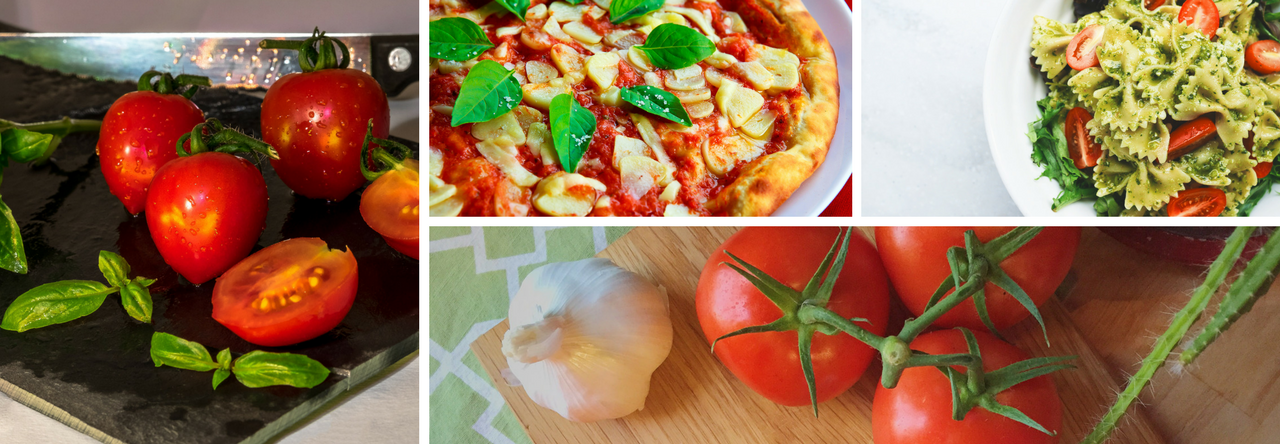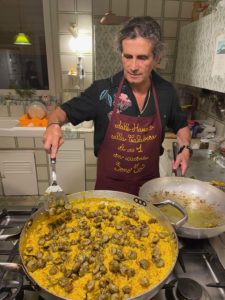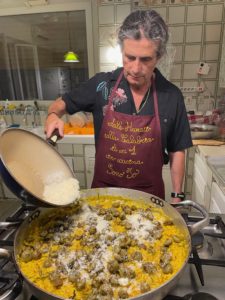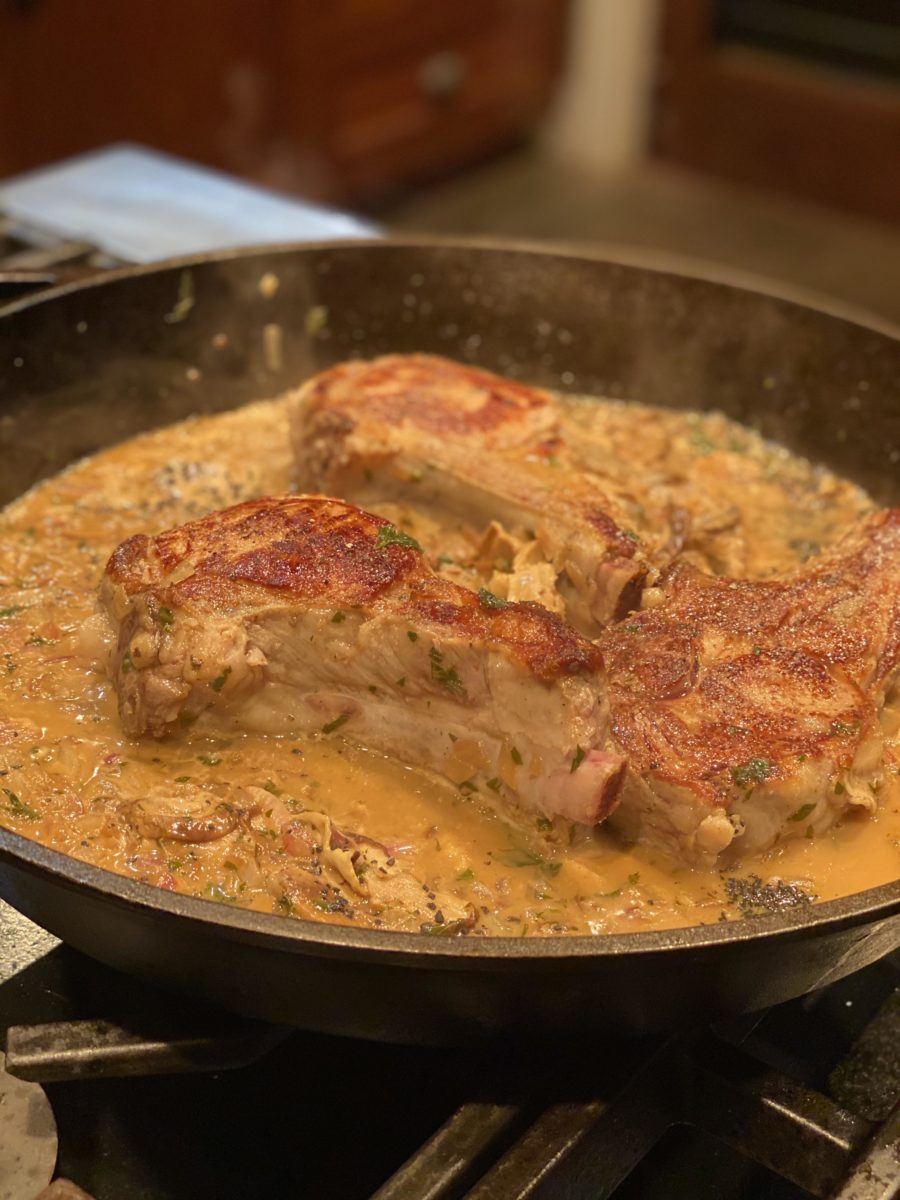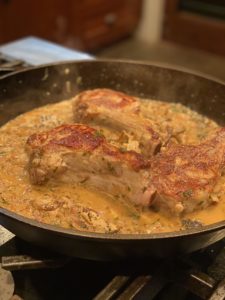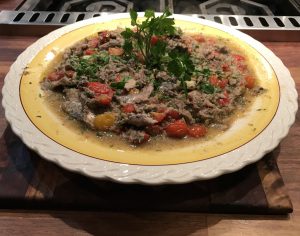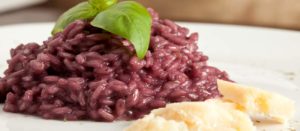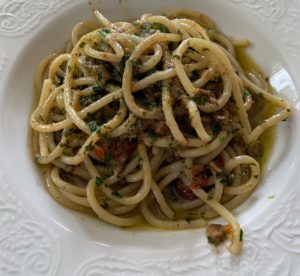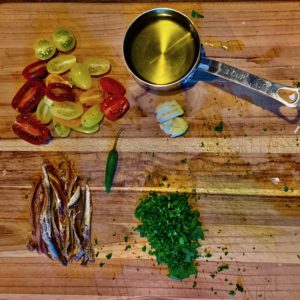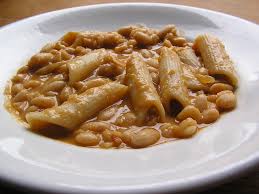Gnocchi are a classic dish that have been served since Roman times. If you want good gnocchi go to Sora Lella, one of the best Roman restaurants on the Isola Tiberina in the center of Roma (https://www.trattoriasoralella.it/it/).
There are various kinds of gnocchi, but the most commonly-known in the United States are those made with potatoes. And while we don’t have the exact types of potatoes in the US as are used in Italy, I decided to try to replicate the flavor and texture of those delicious little “knuckles.”
For some reason I had never made gnocchi, which sounds bad if you think of yourself as a good Chef! Betti and I experimented with a recipe in Mario Batali’s Molto Italiano cookbook –that is generally a good cookbook. Well, not for gnocchi! After replicating his recipe (somewhat faithfully), we made a new version that works much better. First of all, instead of boiling the potatoes, as suggested by Batali, we roasted them. And his recipe recommends boiling the gnocchi and then putting them in a bowl with canola oil to refrigerate, then re-boil the gnocchi immediately before adding a sauce. This doesn’t work! Even with utmost care, the gnocchi that have been pre-boiled turn into soft fragments the minute you try to re-boil them. (Also – canola oil? Please never use that, only olive oil!)
Naturally, I called my mother. “No! You don’t cook them and then put them in the refrigerator!,” she said in horror. “You make them and then you immediately eat them.” So we tried some experiments with this process and learned that you can make them in advance, but with some caveats.
Another part of gnocchi adventure is that I found that I couldn’t bring myself to throw away the delicious cooked potato skins. Betti and I came up with two fantastic (and easy) recipes to use the skins of those roasted potatoes:
- Potato-skin frittata (omelette)
- Twice-baked potato-skins with anchovies, parsley, grated Parmigiano, and red pepper – or anything else you want to add!
Here’s my recipe for simple potato gnocchi. This is enough for four (4) servings as a main course, and eight (8) servings as an appetizer. This recipe works best if you have a potato press or ricer because it allows you to mash up the cooked potato to a very consistent, fine texture (here’s a link to different varieties of ricers: https://robbreport.com/lifestyle/product-recommendations/best-potato-ricer-masher-amazon-2919928/) – I have to confess that I have a very simple one with fine holes that cost me $3, so you don’t need to spend much money to buy one.
Ingredients
- 3 pounds of Russet potatoes (these are the best for gnocchi)
- 1 to 2 cups of organic all-purpose flour; you will need to judge the amount as you make the pasta (dough) for the gnocchi
- 1 large egg
- 1 teaspoon of fine sea salt
Preparation
- Pre-heat the oven to 450 F. While it’s heating, scrub the potatoes and use a fork to poke holes all over each surface. Once the oven has reached 450 F, put a large baking pan on the bottom rack of the oven to catch drippings, and then put the potatoes directly on the middle oven rack.
- Cook them for 45 – 50 minutes. They are cooked when you can reach in with an oven mitt and gently squeeze a potato and feel it give slightly “give” under the pressure of your mitt.
- Remove the potatoes from the oven, and turn off the oven. Allow the potatoes to cool for a few minutes so that they are still warm, but not impossible to handle (15 – 30 minutes should be enough).
- Peel the potatoes with your fingers, placing the peel into a medium-sized bowl. If you want to experiment with my potato skin recipes, put the bowl aside for later. Put the remainder of the potatoes in large bowl, or onto the baking pan you used for the drippings.
- Set up a clean, large work surface — I use a flour-dusted silicone pad on my kitchen counter. Using your potato ricer, mash all of the warm potatoes onto the work surface and form a well in the center.
- Beat the egg with a teaspoon of fine sea salt, then pour it into the potato well. Now, working with about 1/2 cup of flour at a time, begin to mix the flour with the potato and egg. Gently mix, continuing to add more flour, until you have a dough that feels flexible and soft, but not sticky. Form a ball of the dough.
- Knead it very gently for 3 to 4 more minutes until you have a consistent, smooth texture.
- Now divide the dough into even pieces or wedges. Roll each into a ball.
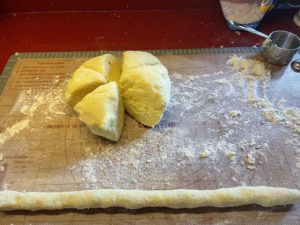
A dough made of cooked russet potatoes, egg, and flour is divided and shaped into gnocchi
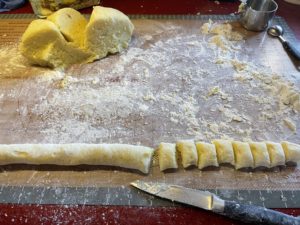
Cutting the rolled potato dough
9. Starting with the first ball, roll it gently into a long log that is about 3/4 inch in diameter. Cut it into 1-inch pieces, and then using a fork or your fingers, roll down the back of each segment to create the characteristic “knuckle” shape.
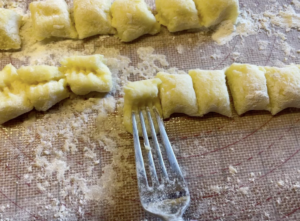
10. Gently place the shaped gnocchi onto a flat, parchment-lined baking dish. Continue creating all of the gnocchi.
At this point, you can either cook the gnocchi in a pot of boiling water (no salt, please, because it will cause the gnocchi to break down) and serve with a delicious sauce –see below- or you can cover the gnocchi with plastic wrap and refrigerate for up to 1 day before cooking.
Alternatively, you can freeze your gnocchi, and then cook them in the boiling water after taking them from your freezer.

